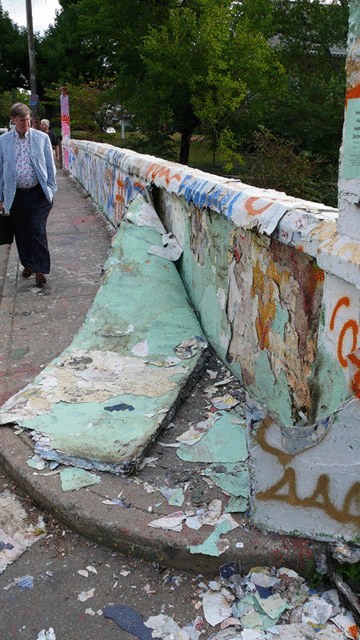
It was a slab of used paint – coats and coats and coats of it.
Oft-painted Beta Bridge, next to the University of Virginia campus in Charlottesville, Virginia, lost some of its latex armor recently as a sheet of paint about 4 feet high, 10 feet long and three inches thick, separated from one side of the bridge and peeled off.
The paint seemed to separate along a green layer of paint, which landscape superintendent Richard Hopkins thinks was either a base coat of paint or a layer to cover up another message. There were about six to 12 layers of paint left on the bridge, though Hopkins said one small corner of the original bridge was exposed briefly. It was soon painted over.
Alexander Gilliam, secretary for the Board of Visitors and unofficial University historian, said painting messages on the bridge began "in earnest" (meaning several times a week) around 1978. The tradition of bridge painting started with students painting messages, particularly sports scores and exhortations to athletes, on the metal railroad bridge that passes over University Avenue at the Corner. Gilliam said the liablity-conscious railroad tried to discourage that practice. The messages then migrated to Beta Bridge, named for the Beta Theta Pi fraternity house, then located at the intersection of Chancellor Street and Rugby Road. That fraternity location was closed in 1971; later, Delta Upsilon fraternity took over the house and unofficial monitoring of the bridge — thus explaining the "THX DU" ("thanks Delta Upsilon") message appended to most paintings, believed to ensure that each masterpiece will not be painted over by the fraternity brothers.
The current bridge, which is owned by CSX railroad, was built in 1923, replacing two smaller wooden bridges, one for horses and one for pedestrians, that spanned the tracks.
No comments:
Post a Comment